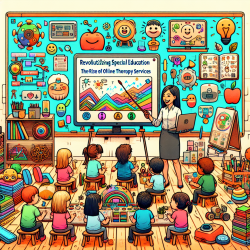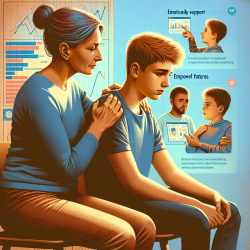As a Special Education Director, I am constantly seeking ways to enhance the services we provide to our students and their families. Recently, I came across a fascinating research article titled "Speech After Stroke: A Manual for the Speech Pathologist and the Family Member," which offers valuable insights into improving speech therapy practices for stroke survivors. This blog will delve into the key takeaways from the research and provide actionable steps for practitioners to implement these findings in their work.
Understanding the Manual
The manual, authored by Stephanie Stryker, is designed to assist both speech pathologists and family members in helping aphasic patients recover language and speech skills impaired due to brain injury, commonly referred to as a stroke. The book is structured into five sections, each focusing on different aspects of speech and language recovery:
- Comprehension of the Spoken Word
- Imitative Ability and Articulation Drills
- Vocabulary Recall, Grammar, and Syntax
- Reading Development Skills
- Writing Development Skills
Key Takeaways for Practitioners
The research emphasizes the importance of structured practice material that can be used by both professionals and family members. Here are some key takeaways and actionable steps for practitioners:
1. Collaborative Approach
The manual encourages a collaborative approach where family members work alongside speech pathologists. This ensures that practice continues outside of clinical settings, enhancing the overall effectiveness of the therapy.
2. Customization and Flexibility
Each patient is unique, and the manual suggests that clinicians should "improvise and expand" the provided materials to adapt to the specific needs of individual patients. This flexibility allows for more personalized and effective therapy sessions.
3. Comprehensive Coverage
The manual covers a wide range of exercises and drills, from basic comprehension to advanced writing skills. Practitioners can use this comprehensive approach to address multiple aspects of speech and language recovery, ensuring a well-rounded therapy plan.
4. Visual and Practical Aids
The use of bold-face large print, well-executed monochromatic drawings, and practical exercises makes the manual highly user-friendly. These aids can be particularly beneficial for patients with visual impairments or cognitive challenges.
Encouraging Further Research
While the manual provides a solid foundation, it is essential for practitioners to stay updated with the latest research and advancements in the field. Engaging in continuous professional development through conferences, publications, and webinars can significantly enhance the quality of care provided to patients.
For those interested in exploring this topic further, I highly recommend reading the original research paper. It offers a deeper understanding of the methodologies and outcomes discussed in this blog. To read the original research paper, please follow this link: Speech After Stroke: A Manual for the Speech Pathologist and the Family Member.
In conclusion, implementing the insights from "Speech After Stroke: A Manual for the Speech Pathologist and the Family Member" can significantly improve the quality of speech therapy provided to stroke survivors. By adopting a collaborative, customized, and comprehensive approach, practitioners can help patients achieve better outcomes in their recovery journey.










